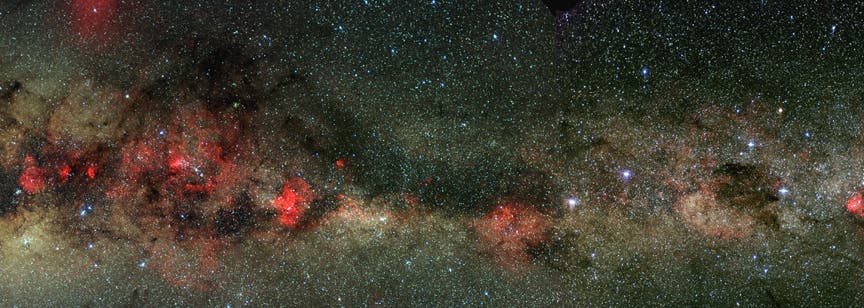Our solar system appears to exist inside a “bubble”, inside a network of cavities inside the interstellar medium, which was probably created by massive star explosions millions billions of years ago. Interstellar medium (ISM) is a term coined for the matter that exists in galaxies, between solar systems. This matter includes gas in ionic, atomic, and molecular form, dust, and cosmic rays, smoothly filling the gaps between the intergalactic matter.
ISM is extremely important and intensely studied by astrophysicists because of the intermediary role it plays, somewhere between stellar and galactic scales; also, dense ISM is the birthplace of stars and molecular clouds. The interplay between ISM and stars also represents the rate at which a galaxy depletes its gaseous content, thus the lifespan of active star formation.
Currently, the sun is passing through a Local Interstellar Cloud (LIC), shown in violet, located in a low density “hole”, called the Local Bubble, shown in black. Understanding this makes a shy, but important step towards understanding the birth and development of our solar system, in an intergalactic context. For example phosphorus, a crucial element which is essential for the formation of DNA is extremely rare in our solar system, and it’s quite possible that it was alltogether absent in the early phases of the Earth.
Picture and article source.










